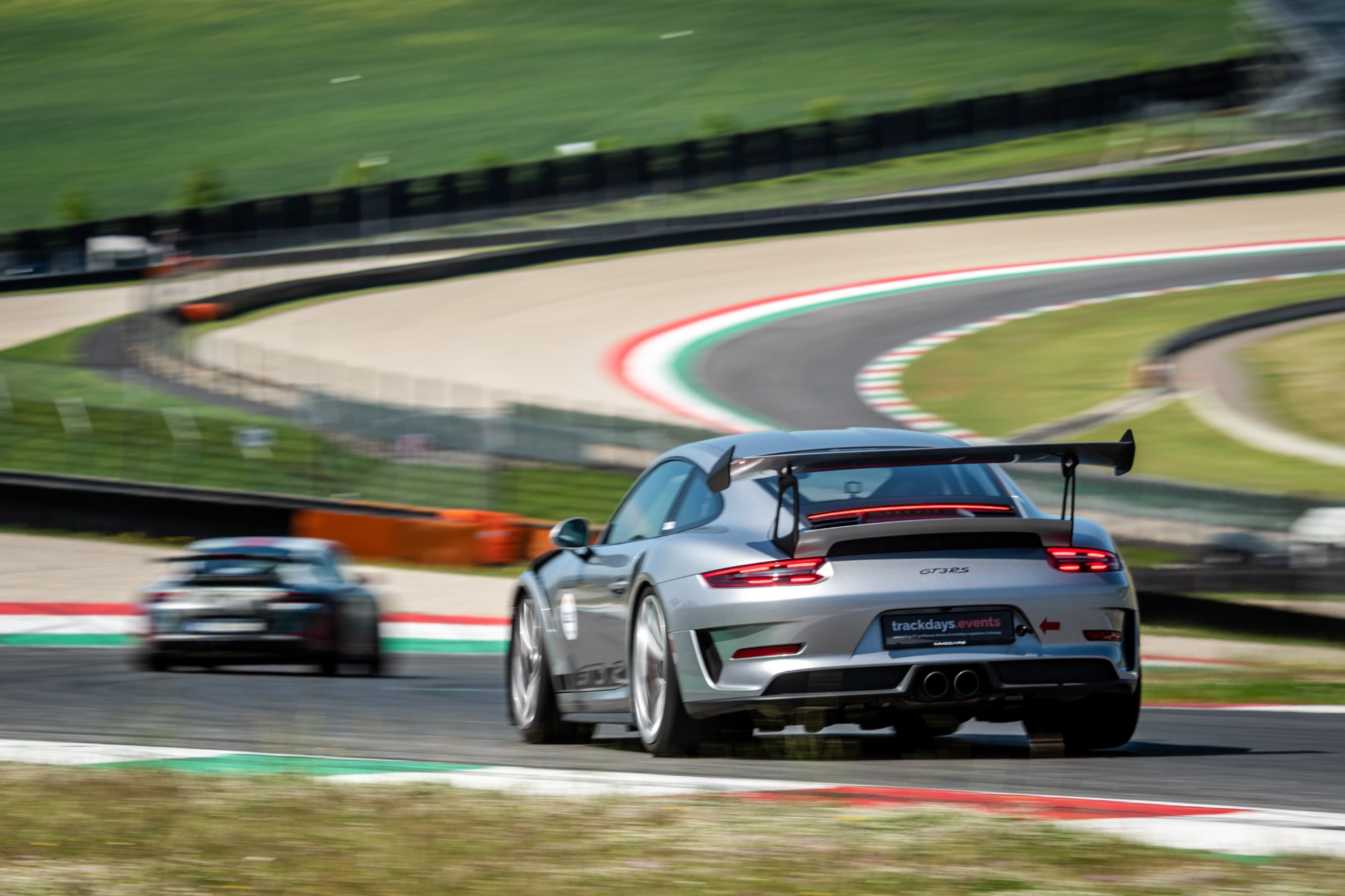Advice/reminder for the car

Although all sports-oriented GT cars are built to be moved quickly on a racetrack, these cars “suffer” under extreme conditions. To avoid unwanted problems as much as possible, the car must be in a mechanically perfect condition. Before every trackday it is therefore strongly recommended to check the car or have it checked. Here you will find some advice on what to do before going out on the track and what to look at before/after each session/stint.
Brakes
Brake discs in good condition (little wear, no cracks, etc) ? Brake pads at least at 80% of the total thickness ? Extremely heat-resistant competition brake fluid is strongly recommended (ask your garage owner/car mechanic). This will avoid the very unpleasant feeling of fading at the end of a long straight line (ATTENTION : THIS IS THE MOST IMPORTANT POINT WHILE PRACTICING CAR SPORT).
Handbrake
If you return to the pits after a session/stint, NEVER pull the handbrake. The brake pads could ‘stick’ to the hot brake discs.
Tires
Before a trackday the tires should have at least 80% of the tire profile (not less than 6 mm). Some racetracks are very abrasiv (e.g. Dijon Prenois), others less.
Tire pressure
THE most frequently discussed topic among sports drivers. Fact is : the warmer a tire becomes, the more the pressure inside the tire increases. Too high air pressure can lead to a grip reduction and in the worst case you get off the track. To reduce the air pressure, air must be released through the valve. A golden rule : drive a few laps. If you feel that the tires start to slip or ‘smear’ you let air out (up to the minimum pressure specified by the manufacturer). IMPORTANT: after a long break or before your journey home, NEVER drive below the pressure specified by the manufacturer.
Wheels
Regularly check the nuts, ideally using a torque wrench.
Wheel rim center caps
Certainly a ‘small’ detail, but to make sure you don’t lose them, we recommend that you remove the wheel rim center caps before you go out on the track. Due to the high heat the caps (often plastic) can melt and you will lose the caps while driving on the track.
Tire valve caps
Use metal valve caps, because the plastic valve caps can melt from the heat. There are drivers who drive without valve caps (Attention! Danger of air loss!)
Gasoline, oils & co
Ideally you should drive to the racetrack with full tank. Depending on the country/race track it can be difficult to find 98 octan gasoline (an additive in your travel bag is always welcome). Usually at the racetrack there is a gas station (except in Imola) which could lead to long queues. Take engine oil in reserve. It can be useful.
Tow hook and stickers
To enter the track, at least one tow hook is mandatory. It can be fixed to the front or to the back. Two tow hooks are ideal. Before leaving home, make sure to have the tow hook/s with you. If you receive car identification stickers, please stick them on the designated areas. Don’t forget to remove hooks and stickers for the way home (it is forbidden to drive with race numbers on open roads).
License plates
If you take them off for the racetrack, don’t forget to put them back on for the way home.
Car interior, luggage- and glove compartment
For safety and attention/concentration reasons, it is strongly recommended to remove all moving objects from the car before driving on the track. Ideally, you should place these objects in a plastic box you have brought with you. It can be stored outside or even better in a secured room provided by the organizer.
Cameras, drones & co
Mostly all racetracks require that the GoPro camera and other film equipment must permanently be installed in the car. Drones are not allowed to fly over the racetrack. If recordings are made from a safe distance, they may be allowed. Often specialized companies and accredited professional photographers are hired to take pictures and films.
Noise protection regulations
By law, every racetrack must meticulously comply with the valid noise protection regulations. The cars are checked for the maximum permissible noise limit (in db) before entering the racetrack (pay attention to sport or modified exhaust systems). Measurements are taken continuously at strategic points on the circuit. In SPA, for example, each car receives officially a small sticker. In case of doubt, a noise protection test is made by a marshal.
To check before/after a session
Always walk around the car and check its general condition (body, windscreen, tires (condition + pressure), discs (cracks ?), brake pads (thickness), wheel nuts tight and all present, possible leaks in the engine and under the car, tow hooks tight, stickers still present, fuel level, etc…).

![]()










